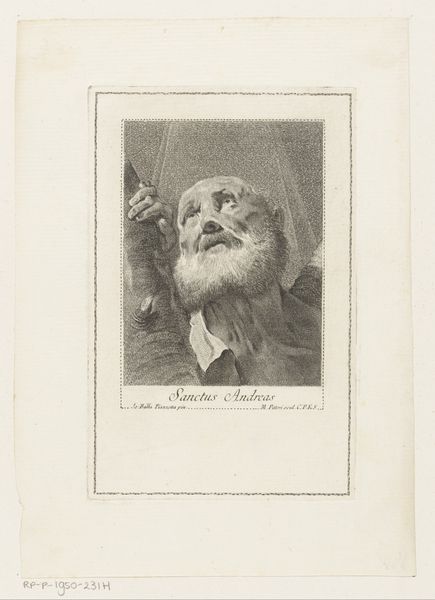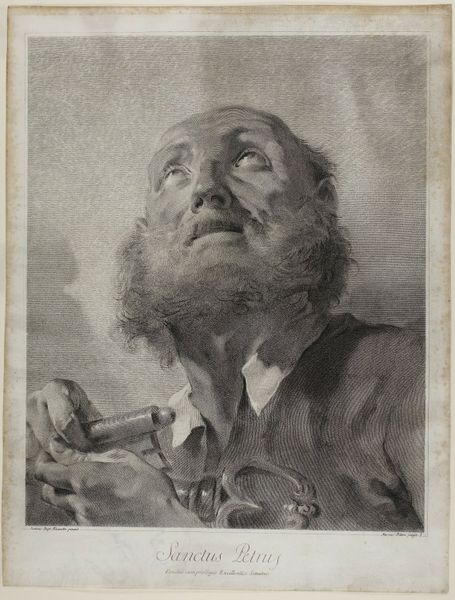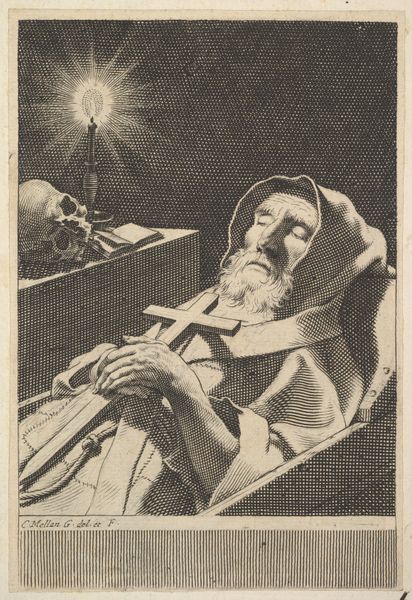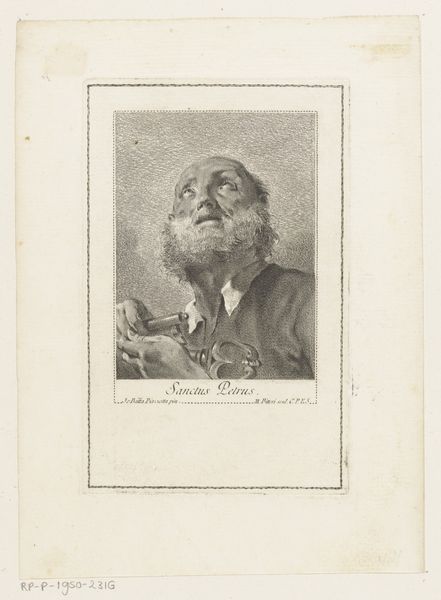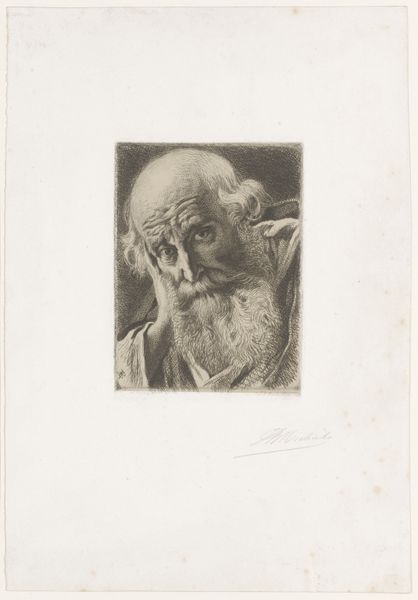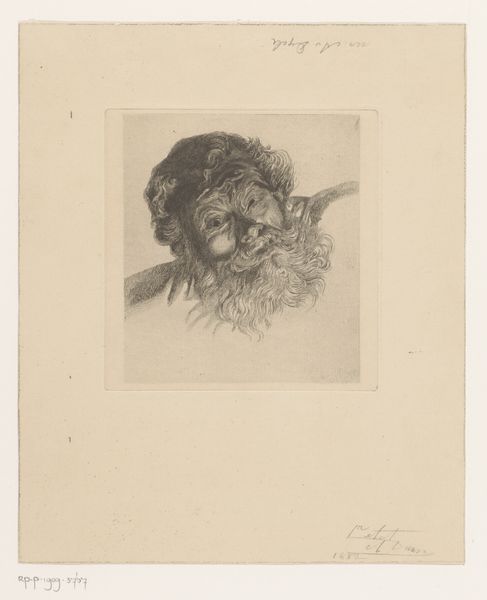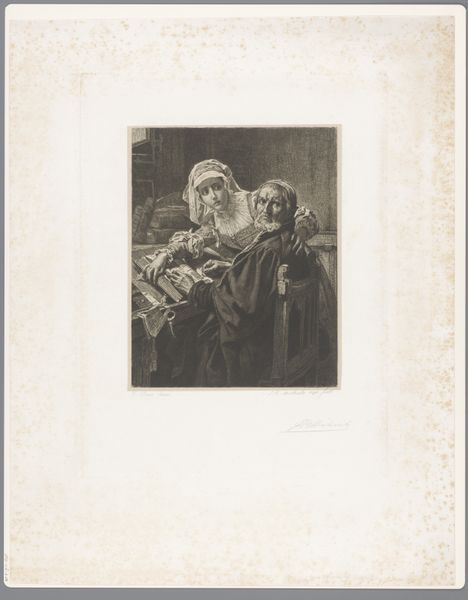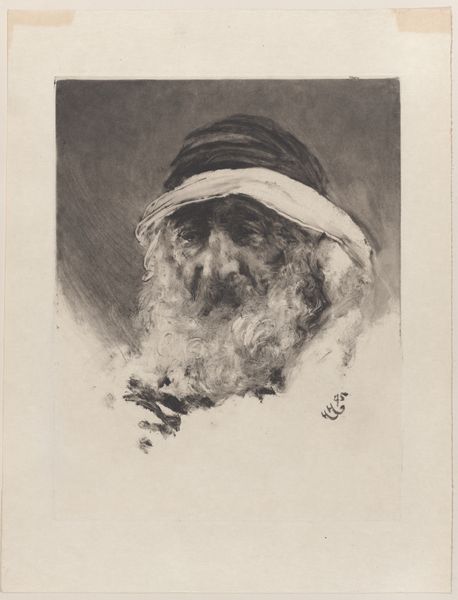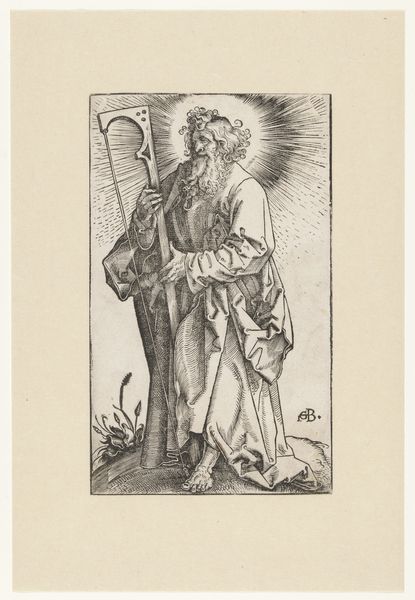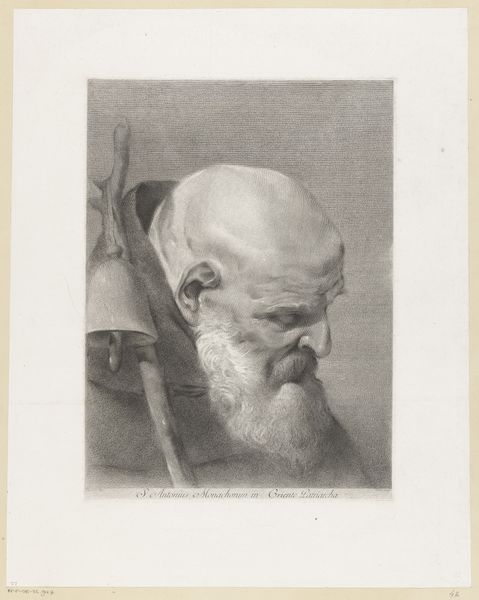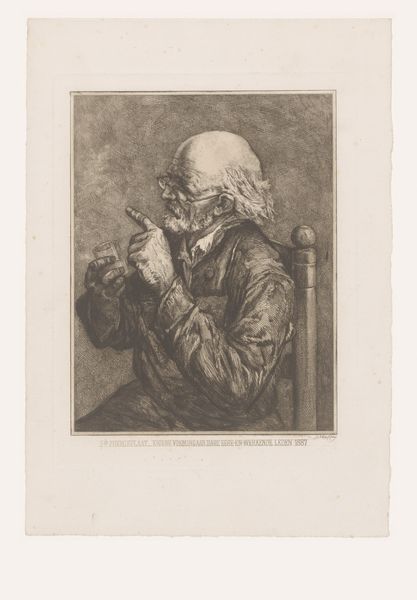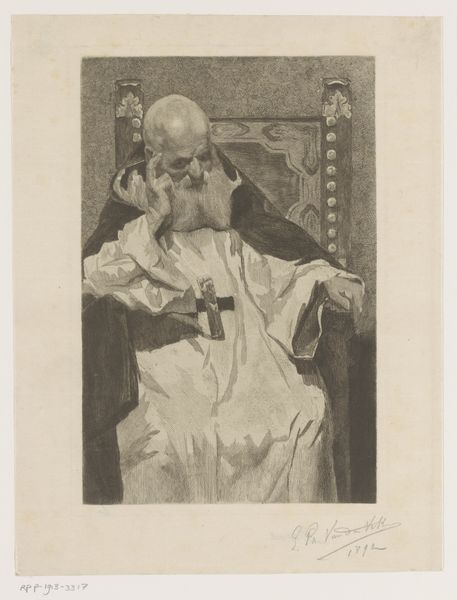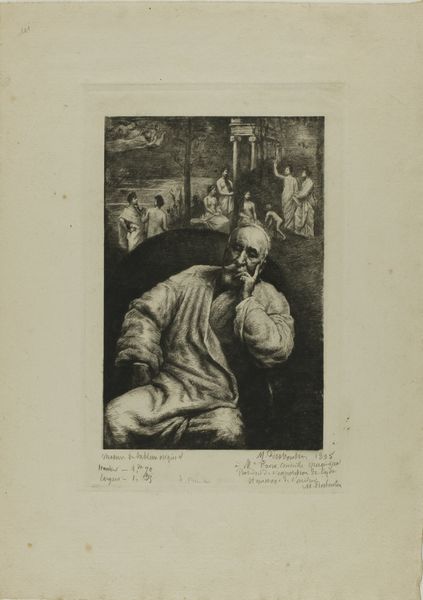
print, engraving
#
portrait
#
baroque
# print
#
history-painting
#
engraving
Dimensions: height 446 mm, width 345 mm
Copyright: Rijks Museum: Open Domain
Editor: So this engraving, "Apostel Andreas," attributed to Giovanni Marco Pitteri, from sometime between 1712 and 1786… there’s such a dramatic upward gaze. It feels very Baroque. What do you see in this piece, particularly given its historical context? Curator: Well, its public role as religious imagery is central. Consider the market for prints like these. They weren't necessarily meant for the elite, but to disseminate images of piety and devotion more broadly. The intensity of Andreas’s expression, rendered through the stark contrasts of engraving, participates in the theatricality favored by the Baroque. Editor: The theatricality… it's like he’s performing faith for an audience, even though he's alone in the image. Curator: Exactly! And think about how these images functioned within religious institutions. They reinforced specific interpretations of faith. Why choose Andrew for such prominence? What did he represent to the intended audience? Editor: Probably his steadfastness. The cross hints at his martyrdom. Did the institutions commissioning these prints control their distribution, then? Curator: Almost certainly. Printmaking allowed for the mass production and distribution of ideology. Knowing how institutions used art to shape beliefs really enhances our appreciation of pieces like this, doesn’t it? Editor: Absolutely! It changes my perception, making me consider the print not just as art, but also as a tool. Curator: Precisely! It's a good reminder of art's complex social and political roles throughout history.
Comments
No comments
Be the first to comment and join the conversation on the ultimate creative platform.
